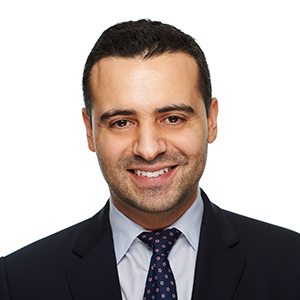We continue to believe that, in the new macroeconomic regime we have entered, the positive correlation between stocks and bonds will likely be long-term problematic for the traditional 60/40 portfolio. As such, we think that the 40/30/30 framework can improve overall risk-adjusted returns as well as portfolio diversification better than the traditional 60/40, especially as it relates to the fixed income side of the equation. In particular, we continue to advocate for some form of a more diversified portfolio, including our 40/30/30 Stocks-Bonds-Alternatives framework. Within the 30% ‘alternatives sleeve’ of that portfolio, given the recent pullback, we now have even higher conviction that allocators of capital can reap benefits by shifting to 10% Private Credit. So, in this latest note in our series on portfolio construction, we go a bit deeper into our thinking around this approach and also respond to some of the excellent questions we have been fielding since we laid out our original thesis about the merits of the 40/30/30 portfolio in May 2022. Our bottom line remains that now is the time to rethink approaches to asset allocation, including re-underwriting one’s traditional fixed income allocation, to add meaningful return and diversification in a world where there is potential for a higher ‘resting heart rate’ for inflation.
No problem can withstand the assault of sustained thinking.
For some years, we have argued that from an asset allocation and portfolio diversification perspective, quantitative easing likely overstated the importance of bonds as both income producers as well as ’shock absorbers’ in modern day portfolios. In May 2022, we began to pound the table harder on this call as quantitative tightening accelerated, changing the underlying characteristics of existing portfolios. At that time, we published an Insights note Regime Change: Enhancing the ‘Traditional’ Portfolio, that made the case that the traditional 60/40 allocation wasn’t providing the same benefits to a balanced portfolio as in the past. As an alternative, we suggested considering an increase in allocations to more inflation resilient assets such as Private Credit, Infrastructure and Real Estate in a ’40/30/30‘ Equities/Bonds/ Alternatives construct.
EXHIBIT 1
How We Suggest Enhancing the Traditional 60/40 Portfolio
KKR Enhanced Portfolio | Investor Benefits |
|---|---|
| 40% Public Equities plus 10% Private Infrastructure and 10% Private Real Estate | Infrastructure and Real Estate assets often have inflation indexation increases embedded in their cash flows; the replacement value of their assets also increases in a rising nominal GDP environment. |
| 30% Traditional Fixed Income plus 10% Private Credit | Shifting a portion of the portfolio to floating rate assets helps boost the income-generating component of the fixed income allocation. It also shortens the duration and provides some valuable diversification to the overall portfolio. Meanwhile, the remaining traditional bonds allocation still allows for some convexity if inflation does cool in 2023. |
Today, however, we want to acknowledge that we are not as adamant that the performance of the 60/40 is at risk, given that this benchmark portfolio experienced its worst performance in 100+ years. Said differently, a tactical rally may be in store, especially if we are right that cyclical inflation peaks in 2023. That said, our long-term viewpoint is unchanged. Specifically, we continue to believe that in the new macroeconomic regime we have entered, there are better ways to improve portfolio diversification and overall risk-adjusted returns beyond what the traditional 60/40 can provide, especially as it relates to the fixed income side of the equation.
EXHIBIT 2
We Are Now Less Bearish On Duration in 2023, But We Still Think the 60/40 Remains Structurally Challenged
EXHIBIT 3
While Year-Over-Year Inflation Will Cool in 2023, We Believe a Regime Change Has Occurred
Our Key Investing Conclusions
1 | While the 60/40 portfolio could snap back in the short-term, our fundamental, long-term view that the correlation between Equities and Bonds has turned positive has not changed. As such, we think we are in a different regime for asset allocation. |
2 | We reiterate our view that a 40/30/30 Equities-Bonds-Alternatives allocation offers more robustness around diversification and inflation protection for the macroeconomic environment ahead. |
3 | We think that the case for a 10% allocation to Private Credit is actually more compelling today than when we wrote our original piece in May 2022. This asset class is benefitting from traditional lenders being sidelined, as capital charges mount against rising provisions into a slowing economy. We also see improved lending terms, higher absolute rates, and more attractive counterparties. |
4 | Because building a 10% position in Private Credit could take multiple quarters, we believe that investors should consider the current value offered in Liquid Credit. We see some compelling relative value in CLO liabilities for example, which could be used as a transitional bridge as one ramps towards a 10% allocation in Private Credit. |
5 | Institutional and individual investors may look for different ways to implement our view. Draw-down funds remain compelling options for institutions and high net worth individuals, but we also see some interesting tactical opportunities across BDCs, interval Funds, and even some high quality ETFs. |




Share on